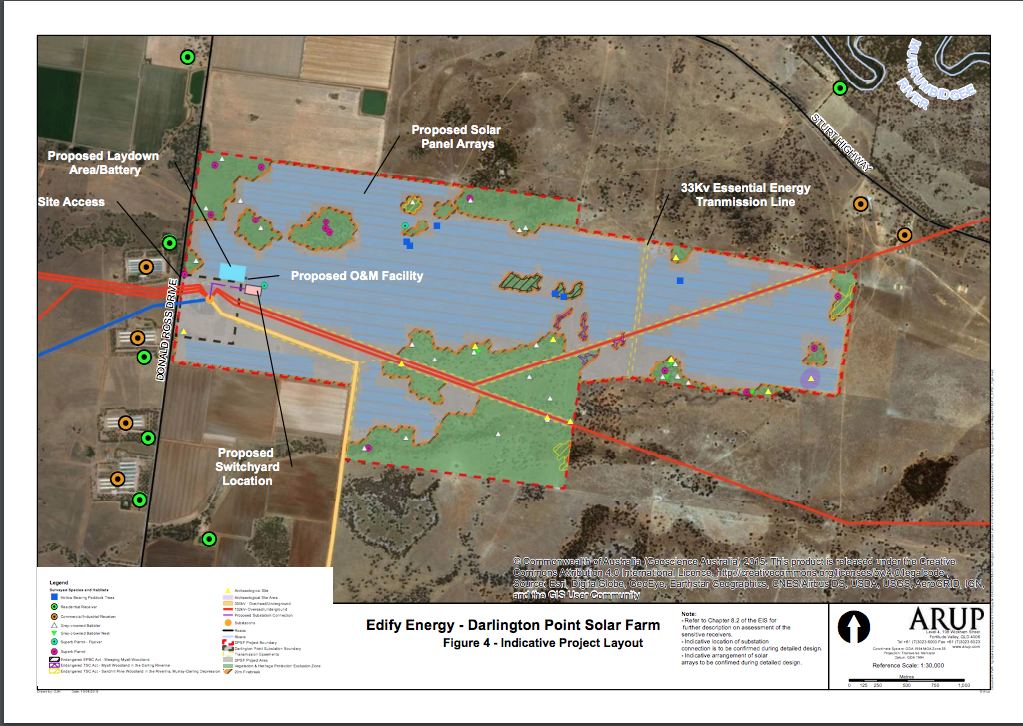As one of the early movers in tracking in Australia, which is today one of its key markets alongside the home turf of the United States, Array Technologies gained market share really quickly. With the latest deal, the firm has passed the 1.5 GW supply milestone.
Array was commissioned to supply its DuraTrack HZ v3 single-axis solar trackers to one of the nation’s biggest solar farms currently in the development pipeline, the 333 MW DC (275 MW AC) Darlington Point solar PV project. For the tracker firm, the Darlington Point Solar Farm is an exciting project for its portfolio and a testament to the maturity of the Australian solar market.
“Massive projects, such as this one, require the lowest levelized cost of energy from their tracking technology in order to stack up economically and we are pleased to offer the best solution,” says Jeff Krantz, executive vice president of global sales of Array Technologies.
The 333 MW project is a joint venture between Australian renewable energy developer Edify Energy and Octopus Investments. In the UK investor’s first deal since entering the Australian marketplace, Octopus and Edify Energy have arranged more than $450 million to finance the solar farm, which has an approval to be collocated with a 100 MWh energy storage facility at Darlington Point, New South Wales.
Canadian Solar will provide over 820,000 of its HiKu modules (CS3W-P), which average an output of over 400 W per module, to be deployed across an area of approximately 2,000 acres. As announced earlier, the Chinese-Canadian solar heavyweight will also partner with Signal Energy Australia to provide EPC services on the project, as well as handle O&M duties.
The Darlington Point Solar Farm has a signed PPA with Delta Electricity, Vales Point coal-fired power station owner, for 150 MW AC or approximately 55% of its output.
Construction is slated to begin in March this year, and create nearly 400 direct onsite peak jobs. The solar farm is expected to be up and running in early 2020, generating 685,000 MWh of renewable energy each year – enough to power around 115,000 homes.
This content is protected by copyright and may not be reused. If you want to cooperate with us and would like to reuse some of our content, please contact: editors@pv-magazine.com.









2 comments
By submitting this form you agree to pv magazine using your data for the purposes of publishing your comment.
Your personal data will only be disclosed or otherwise transmitted to third parties for the purposes of spam filtering or if this is necessary for technical maintenance of the website. Any other transfer to third parties will not take place unless this is justified on the basis of applicable data protection regulations or if pv magazine is legally obliged to do so.
You may revoke this consent at any time with effect for the future, in which case your personal data will be deleted immediately. Otherwise, your data will be deleted if pv magazine has processed your request or the purpose of data storage is fulfilled.
Further information on data privacy can be found in our Data Protection Policy.